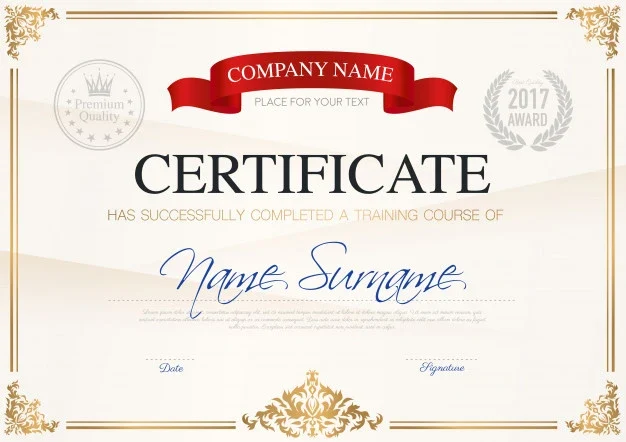WebLogic Server, often referred to as Oracle WebLogic Server, is an enterprise-grade Java EE application server developed by Oracle Corporation. It provides a robust runtime environment for hosting, deploying, and managing Java-based enterprise applications. It provides a stable and feature-rich platform for building and running mission-critical business applications in diverse industries.
- Join Our Live Online Classes

Google Reviews

JustDial Reviews
Why Radical Technologies
Live Online Training
Live Classroom Training
Self Paced Training
Live Online Training
Live Classroom Training
Self Test Training
Why enroll Redhat Linux
Why enroll for Terraform course ?
Course Benefits
Choosing to learn Terraform can be highly beneficial for several reasons:
1. Infrastructure as Code (IaC): Terraform allows you to define and manage your infrastructure as code. This approach provides numerous benefits, including version control, repeatability, and consistency in infrastructure deployments. With Terraform, you can codify your infrastructure, making it easier to manage, maintain, and scale.
2. Multi-Cloud Support: Terraform supports multiple cloud providers, including AWS, Azure, Google Cloud Platform (GCP), and others. This means you can use the same tooling and processes to manage infrastructure across different cloud environments, enabling hybrid and multi-cloud deployments.
3. Automation and Orchestration: Terraform automates the provisioning and management of infrastructure resources, allowing you to define complex infrastructure setups with ease. By using Terraform, you can automate repetitive tasks, reduce manual errors, and increase efficiency in infrastructure management.
4. Scalability and Flexibility: Terraform is highly scalable and flexible, making it suitable for managing infrastructure at any scale. Whether you’re deploying a single virtual machine or a complex microservices architecture, Terraform provides the tools and capabilities to manage your infrastructure effectively.
5. Community and Ecosystem: Terraform has a large and active community of users, contributors, and module developers. This vibrant ecosystem provides access to a wide range of reusable modules, plugins, and integrations, making it easier to leverage best practices and accelerate development.
6. Cloud Native Integration: Terraform integrates seamlessly with cloud-native technologies such as Kubernetes. This allows you to manage both infrastructure and application deployments using a unified workflow, simplifying the management of modern, containerized applications.
7. Compliance and Governance: Terraform supports compliance and governance requirements by enabling you to define and enforce policies, standards, and configurations as code. With Terraform, you can implement security controls, enforce best practices, and ensure consistency across your infrastructure deployments.
8. Career Opportunities: Terraform skills are in high demand in the job market. By learning Terraform, you can increase your value as a professional and open up career opportunities in roles such as DevOps Engineer, Cloud Engineer, Infrastructure Engineer, and Site Reliability Engineer. Overall, Terraform provides a powerful and versatile toolkit for managing infrastructure as code. Whether you’re working in a cloud-native environment or managing traditional infrastructure, Terraform can help you automate, manage, and scale your infrastructure effectively.
Designations
- ALL COMBO COURSES
- PROGRAMMING COURSES
- NON PROGRAMMING COURSES


Want to become Engineer?


Want to become Engineer?


Want to become Engineer?
WhyTerraform ?
Multi-Cloud Support
Declarative Configuration
Resource Graph
Modularity and Reusability
State Management
Plan and Apply Workflow
Extensibility
About your Terraform Certification Course
Terraform Skills Covered
-
State Management
-
Terraform Modules
-
Dependency Management
-
Terraform CLI
-
Terraform Configuration Language (HCL)
-
Infrastructure as Code (IaC) Principles
-
Resource Provisioning
-
Terraform Providers
-
Terraform Workspaces
-
Terraform Best Practices
Curriculum Designed by Experts
WEBLOGIC ADMIN Course Syllabus
1) Understanding Java/J2EE Technologies
a. Distributed Environment
b. Dif. bet. Web & App Server
c. About Servers
d. Environments – Dev, Testing(SIT, UAT), Pre Prod & Prod
e. File Management in Java
2) Introduction to WebLogic Server
a. Terminology
b. Dif. bet. WLS Versions(9.x, 10.x & 11)
c. Overview of WLS System Admin
3) Installation Guide
a. Installation Modes
b. Installable Product Components
c. Product Distribution
d. Pre Installation
e. Installing the Steps
f. Post Installation
g. Uninstallation
h. Overview of Admin Console
4) WL Domains Configuration
a. Creating WL Domain
b. Understanding Domain Configuration
i. Domain Configuration Files
ii. Managing Configuration Changes
c. Configuring Environment
d. Configuring Admin Server
e. Configuring Managed Servers
f. Configuring Clusters
g. Configuring JDBC & JMS Settings
h. Extending WL Domains
i. Extending JDBC & JMS Domains
j. Examples Creating Domains
5) Domains Creation Using Pack & Unpack Commands
a. Pack
b. Unpack
6) Creating Templates by using the Domain Template Builder
a. Configuring the Templates
b. Creating Domain Templates by Using the Domain Template Builder
c. Creating Extension Templates by Using the Domain Template Builder
7) Managing Server Startup & Shutdown
a. Starting & Stopping Servers
b. Setting up WLS Instance as Windows Service
c. Avoiding & Recovering from Server Failover
d. Understanding Server Life Cycle
8) Node Manager Administrator’s Guide
a. Overview
b. Node Manager Configuration
c. Using Node Manager
9) Configuring Log Files & Filtering Log Messages
a. WebLogic Logging Services
b. Filtering WebLogic Server Log Messages
c. Subscribing to Messages
10) Clusters
a. Introduction
b. Communications in a Cluster
c. Cluster Configuration
d. Load Balancing in a Cluster
e. Failover & Replication in a Cluster
f. Whole Server Migration
g. Cluster Architectures
h. Setting up Weblogic Clusters
i. Clustering Best Practices
11) Proxy Server Configuration
a. Installing & Configuring the Web Server & Plug-in
i. Apache HTTP Server Plug-in
12) Configuring WebLogic Server JDBC Resources
a. Configuring WL JDBC Resources
b. Configuring JDBC Data Sources
c. Configuring multiple Data Sources
13) Configuring WebLogic JMS Resources
a. Understanding JMS Resources Configuration
14) Configuring WL Store & Front
a. Understanding Store & Front
b. Configuring Store & Front
15) Configuring WL Messaging Bridge
a. Understanding Messaging Bridge
b. Configuring Messaging Bridge
c. FAQs
16) Deployment Applications to WLS
a. Understanding
b. Preparing Apps & Modules for Deployment
c. Configuring of Apps for Production Environment
d. Export an Application for Deployment
e. Weblogic.Deployer for Apps Deployment & Weblogic.Deployer
f. Auto Deployment
g. Re Deploying
h. Managing the deployment
17) Security
a. Authentication & Authorization
b. Single Sign On
18) Performance & Tuning
a. Performance Tuning
b. OS Performance Tuning
c. JVM Performance Tuning
d. WLS Performance Tuning
e. WL Persistent Store Performance Tuning
f. DB Performance Tuning
g. WL EJBs Performance Tuning
19) Troubleshooting & Monitoring
a. Cluster Troubleshooting
b. Cluster Multicast Configuration Troubleshooting
c. Monitoring & Managing WL JDBC Resources
d. Monitoring & Troubleshooting of WL JMS Resources
e. Monitoring & Troubleshooting of Store & Forward
20) SNMP
21) Basic UNIX Commands
22) WLST & Command Reference
Free Career Counselling
+91 8882400500
Global Certification
- Exam & Certification

Terraform Course Projects in Seattle
Multi-Cloud
Deployment
Highly Available Web Application
Infrastructure Governance and Compliance
Container Orchestration with Kubernetes
Infrastructure Monitoring and Logging
Disaster Recovery (DR) Setup
Microservices Architecture
Serverless Architecture
Hybrid Cloud Deployment
Continuous Integration and Delivery (CI/CD) Pipelines
Get Experience Of 4+ Years
- Projects
- Real Time Protection
- Assignments

-
Solution for BigData Problem
-
Open Source Technology
-
Based on open source platforms
-
Contains several tool for entire ETL data processing Framework
-
It can process Distributed data and no need to store entire data in centralized storage as it is required for SQL based tools.

-
Solution for BigData Problem
-
Open Source Technology
-
Based on open source platforms
-
Contains several tool for entire ETL data processing Framework
-
It can process Distributed data and no need to store entire data in centralized storage as it is required for SQL based tools.

-
Solution for BigData Problem
-
Open Source Technology
-
Based on open source platforms
-
Contains several tool for entire ETL data processing Framework
-
It can process Distributed data and no need to store entire data in centralized storage as it is required for SQL based tools.
WEBLOGIC ADMIN Certification Course reviews
I had undergone oracle DBA course under Chetan sir's Guidance an it was a very good learning experience overall since they not only provide us with theoretical knowledge but also conduct lot of practical sessions which are really fruitful and also the way of teaching is very fine clear and crisp which is easier to understand, overall I had a great time for around 2 months, they really train you well.also make it a point to clear all your doubts and provide you with clear and in-depth concepts hence hope to join sometime again
I have completed Oracle DBA 11g from Radical technology pune. Excellent trainer (chetna gupta). The trainer kept the energy level up and kept us interested throughout. Very practical, hands on experience. Gave us real-time examples, excellent tips and hints. It was a great experience with Radical technologies.
Linux learning with Anand sir is truly different experience... I don't have any idea about Linux and system but Anand sir taught with scratch...He has a great knowledge and the best trainer...he can solve all your queries related to Linux in very simple way and giving nice examples... 100 to Anand Sir.
I had a wonderful experience in Radical technologies where i did training in Hadoop development under the guidance of Shanit Sir. He started from the very basic and covered and shared everything he knew in this field. He was brilliant and had a lot of experience in this field. We did hands on for every topic we covered, and that's the most important thing because honestly theoretical knowledge cannot land you a job.
I have recently completed Linux course under Anand Sir and can assuredly say that it is definitely the best Linux course in Pune. Since most of the Linux courses from other sources are strictly focused on clearing the certification, they will not provide an insight into real-world server administration, but that is not the case with Anand Sir's course. Anand Sir being an experienced IT infrastructure professional has an excellent understanding of how a data center works and all these information is seamlessly integrated into his classes.
Redhat Linux System Administration - Roles and Responsibilities
1. Basic user account management (creating, modifying, and deleting users).
2. Password resets and account unlocks.
3. Basic file system navigation and management (creating, deleting, and modifying files and directories).
4. Basic troubleshooting of network connectivity issues.
5. Basic software installation and package management (installing and updating software packages).
6. Viewing system logs and checking for errors or warnings.
7. Running basic system health checks (CPU, memory, disk space).
8. Restarting services or daemons.
9. Monitoring system performance using basic tools (top, df, free).
10. Running basic commands to gather system information (uname, hostname, ifconfig).
1. Intermediate user account management (setting permissions, managing groups).
2. Configuring network interfaces and troubleshooting network connectivity issues.
3. Managing file system permissions and access control lists (ACLs).
4. Performing backups and restores of files and directories.
5. Installing and configuring system monitoring tools (Nagios, Zabbix).
6. Analyzing system logs for troubleshooting purposes.
7. Configuring and managing software repositories.
8. Configuring and managing system services (systemd, init.d).
9. Performing system updates and patch management.
10. Monitoring and managing system resources (CPU, memory, disk I/O).
1. Advanced user account management (LDAP integration, single sign-on).
2. Configuring and managing network services (DNS, DHCP, LDAP).
3. Configuring and managing storage solutions (RAID, LVM, NFS).
4. Implementing and managing security policies (firewall rules, SELinux).
5. Implementing and managing system backups and disaster recovery plans.
6. Configuring and managing virtualization platforms (KVM, VMware).
7. Performance tuning and optimization of system resources.
8. Implementing and managing high availability solutions (clustering, load balancing).
9. Automating system administration tasks using scripting (Bash, Python).
10. Managing system configurations using configuration management tools (Ansible, Puppet).
1. Learning basic shell scripting for automation tasks. 2. Understanding file system permissions and ownership. 3. Learning basic networking concepts (IP addressing, routing). 4. Learning how to use package management tools effectively. 5. Familiarizing with common Linux commands and utilities. 6. Understanding basic system architecture and components. 7. Learning basic troubleshooting techniques and methodologies. 8. Familiarizing with basic security principles and best practices. 9. Learning how to interpret system logs and diagnostic output. 10. Understanding the role and importance of system backups and restores.
1. Advanced scripting and automation techniques (error handling, loops).
2. Understanding advanced networking concepts (VLANs, subnetting).
3. Familiarizing with advanced storage technologies (SAN, NAS).
4. Learning advanced security concepts and techniques (encryption, PKI).
5. Understanding advanced system performance tuning techniques.
6. Learning advanced troubleshooting methodologies (root cause analysis).
7. Implementing and managing virtualization and cloud technologies.
8. Configuring and managing advanced network services (VPN, IDS/IPS).
9. Implementing and managing containerization technologies (Docker, Kubernetes).
10. Understanding enterprise-level IT governance and compliance requirements.
1. Designing and implementing complex IT infrastructure solutions. 2. Architecting and implementing highly available and scalable systems. 3. Developing and implementing disaster recovery and business continuity plans. 4. Conducting security audits and vulnerability assessments. 5. Implementing and managing advanced monitoring and alerting systems. 6. Developing custom automation solutions tailored to specific business needs. 7. Providing leadership and mentorship to junior team members. 8. Collaborating with other IT teams on cross-functional projects. 9. Evaluating new technologies and making recommendations for adoption. 10. Participating in industry conferences, workshops, and training programs.
Find This Certification Training Course in other cities
Abu Dhabi
Abu Dhabi
Abu Dhabi
Abu Dhabi
Abu Dhabi
Abu Dhabi
Abu Dhabi
Abu Dhabi
Abu Dhabi
Abu Dhabi
Abu Dhabi
Abu Dhabi
Abu Dhabi
Abu Dhabi
Abu Dhabi
Abu Dhabi
Abu Dhabi
Abu Dhabi
Abu Dhabi
Abu Dhabi
Abu Dhabi
Abu Dhabi
Abu Dhabi
Abu Dhabi
Abu Dhabi
Abu Dhabi
Abu Dhabi
Abu Dhabi
Abu Dhabi
Abu Dhabi
Abu Dhabi
Abu Dhabi
Abu Dhabi
Abu Dhabi
Abu Dhabi
Abu Dhabi
Abu Dhabi
Abu Dhabi
Abu Dhabi
Abu Dhabi
Are You Not Waiting For Placement After Your Course Completion
Register for Next placement Drive

Completed, Came from Any other Institute OR Online Help
- Join our Brushup Session out Support until You find Job
Get Experience Of 4+ Years
- Projects
- Real Time Protection
- Assignments

-
Solution for BigData Problem
-
Open Source Technology
-
Based on open source platforms
-
Contains several tool for entire ETL data processing Framework
-
It can process Distributed data and no need to store entire data in centralized storage as it is required for SQL based tools.

-
Solution for BigData Problem
-
Open Source Technology
-
Based on open source platforms
-
Contains several tool for entire ETL data processing Framework
-
It can process Distributed data and no need to store entire data in centralized storage as it is required for SQL based tools.

-
Solution for BigData Problem
-
Open Source Technology
-
Based on open source platforms
-
Contains several tool for entire ETL data processing Framework
-
It can process Distributed data and no need to store entire data in centralized storage as it is required for SQL based tools.





